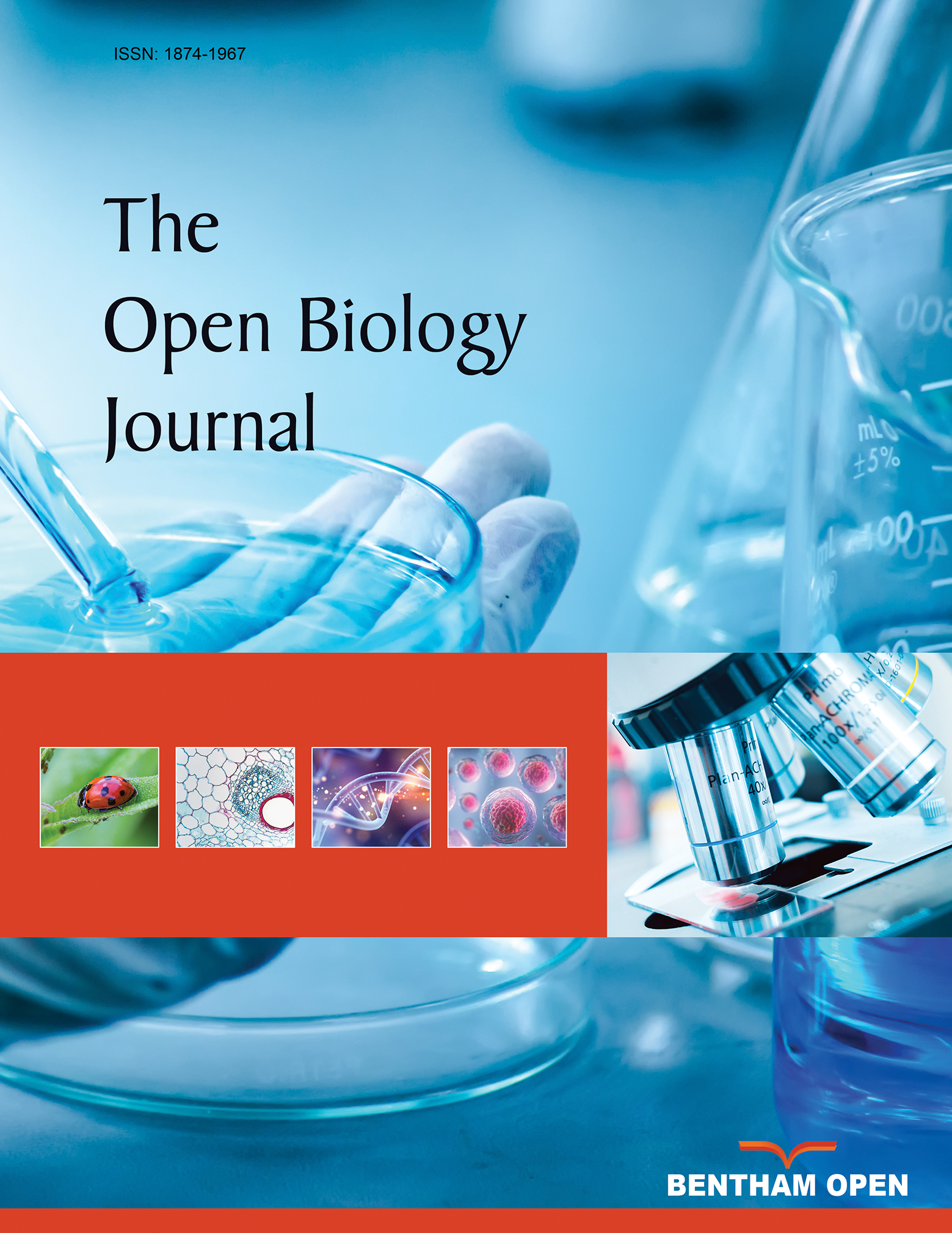Composition and Quality Standards of Naturally Derived Anti Tan Medicine
Abstract
Background:
Tanning nowadays due to pollution, stress, UV rays, and lifestyle has become a major skincare problem. Synthesis of a poly-herbal anti-tan formulation has been performed in this work, and it is evaluated on various parameters.
Objective:
The present work is aimed at the synthesis of herb-based anti-tan medicine and the evaluation of its various parameters for its efficiency as well as stability.
Materials & Methods:
The herbal preparation was prepared in-house according to the proposed composition, using all the natural contents. The dye was evaluated for its different standards.
Results:
The values of various parameters certified the quality standards of the formulation. The parameters were found to be ample enough for the standardization of herbal medicinal formulation.
Conclusion:
The prepared herbal pack was found to be appropriate according to all standards and can serve as a better alternative for treating tanning.
1. INTRODUCTION
A tan is the healing mechanism of skin to protect itself from sun damage. When ultraviolet rays penetrate the skin, they stimulate the production of melanin, a dark brown pigment, for the purpose of shielding the skin from burning. As a result, the skin gets darker in the form of a tan. UVA rays penetrate to the lower layers of the epidermis, where they trigger cells called melanocytes to produce melanin. Melanin is the brown pigment that causes tanning. Sun tanning is the process in which skin color is darkened or tanned. The first effect of sunlight is the erythema (redness) of the skin followed by the formation of tan. Moderate exposure from the sun contributes to the production of melanin and vitamin D by the body. Melanin protects skin cells from ultraviolet (UV) B radiation damage. After DNA is damaged by UV light, p53 is activated, and then the transcription of the host gene, including pro-opiomelanocortin (POMC), is carried out leading to an increased release of a melanocyte-stimulating hormone which gives signals to melanocytes via the melanocortin 1 receptor (MC1R) for increasing melanogenesis and transfering melanosomes to keratinocytes, which together, are responsible for the tanning response [1]. Oils, lotions, creams, or gels containing UV-B chemical sunscreens with a lower Sun Protection Factor (SPF) are used to facilitate tanning without burning. Some people use chemical products which can give a tanning effect without exposure to UV radiation; this process is known as sunless tanning [2]. The incidence of skin cancers has risen dramatically over the past century, and this is largely attributed to increased exposure to UV light from the sun. Despite public education initiatives aimed at preventing skin cancer, many individuals continue to tan, citing reasons, such as the relationship between tanning and physical and emotional health, an active lifestyle, and physical beauty. Generally, tans last up to 7 to 10 days before the skin starts to naturally exfoliate and regenerate. Exfoliation helps to remove pigmented dead skin cells from the outer layer of skin. Skin lightening products help to remove tan [3]. Herbs are widely used as curatives, as they are easily accessible, less expensive, and non-toxic. From ancient times, people are using herbs for cleaning, beautifying, and other purposes [4]. Rosewater, sandalwood, turmeric, tomato juice, lime juice, milk, honey, and Multani Mitti are the herbal home available agents that aid in removing tan more effectively. There are various products available in the market that claim to remove tan in the most natural and gentle manner [5]. The truth is, these products are loaded with different chemicals. Certain chemicals or ingredients can cause allergies on the skin that has been exposed too much to the sun or is already tanned. One of the best alternative is trying out herbal materials to remove tan [6]. These natural substances are very effective in the treatment of tan from the skin. Moreover, they will not cause any side effect and will enhance the health of the skin by adding nutrients and antioxidants. It helps to slough off dead cells to fade away the tan while keeping the skin soft and hydrated. Herbal products provide cellular skin protection and a youthful glow [7]. The present work focuses on the composition of an anti-tan herbal treatment for the skin along with the determination of its quality standards.
2. MATERIALS AND METHODS
Some of the natural ingredients were selected on the basis of the previous literature review available. They were taken in the proposed amounts, as mentioned in Table 1. Individual components were taken in the purified form and weighed accurately. All the ingredients were combined evenly with the help of a mortar pestle.
2.1. Composition of Anti-tan Skin Pack
| S.No. | Name | Biological Name | Quantity |
|---|---|---|---|
| 1. | Multani Mitti | Fuller’s Earth | 100 gm |
| 2. | Sandalwood | Santalum album | 40 gm |
| 3. | Orange peel | Citrus sinensis | 30 gm |
| 4. | Rose Petal | Rosa canina | 10 gm |
| 5. | Manjistha | Rubia cordifolia | 10 gm |
| 6. | Oats | Avena sativa | 5 gm |
| 7. | Turmeric | Curcuma longa | 5 gm |
2.2. Role of the Ingredients
2.2.1. Multani Mitti
Multani Mitti or Fuller’s earth, as shown in Fig. (1), is a mineral-rich clay material that has long been used as a beauty ingredient. Multani Mitti is an essential ingredient of beauty and skincare products, as it provides minerals like magnesium, silica, quartz, calcium, iron, calcite and magnesium chloride, etc.,. It makes the skin radiant. It has been proven to be suitable for irritable skin. Its soothing action pacifies the skin. It has the capability to decolorize oil or liquids without chemical treatment. Due to its excellent adsorbing quality, it may be argued that Multani Mitti helps remove oil/sebum from the face or hair [8]. It is an adsorbent clay consisting essentially of calcium montmorillonite. Montmorillonite is an aluminum silicate of approximate formula (Al,Fe,Mg)4Si8O20(0H)4 in which the relative amounts of Al, Fe, and Mg are not fixed. It should be distinguished from sodium montmorillonite, often known as bentonite [9]. It helps in skin care through different ways like diminishing pore sizes, removing blackheads and whiteheads, soothing sunburns, cleansing skin, improving blood circulation, complexion, reducing acne and blemishes, as they contain healthy nutrients [10].
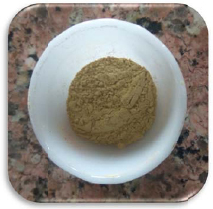
2.2.2. Sandalwood
Sandalwood powder, present in Fig. (2), has long been used for skin problems. Regular use of it exfoliates the skin, soothes sunburn, and removes suntan. The terpenoids present in sandalwood helps to treat suntan. The main ingredient of sandalwood oil is α-santalol that has many therapeutic properties. α-Santalol and β-santalol, and santenone are the main constituents of sandalwood oil. lt also helps smoothen the skin with a cooling effect, thereby reducing the darkness caused due to a suntan. The number of fragrance-sensitive individuals reacting to 5% santalol (1.12%) is quite low for this sub-population, suggesting that santalol may not represent much risk of skin sensitization for Caucasians [11].
2.2.3. Orange Peels
Orange peels, as shown in Fig. (3), are a rich source of vitamin C, calcium, and dietary fibers. The orange peels can make skin bright and fair, also known as a natural bleach, which helps in removing dark spots and tan layers from skin caused due to tanning; the sun is the major reason behind that. Orange peel powder also reduces blemishes on the skin. Previous studies showed that red orange extracts (Citrus sinensis varieties Moro, Tarocco, and Sanguinello) possess strong in vitro free radical scavenging/antioxidant activity and photo-protective effects. Skin pigmentation is a defensive response to the production of Reactive Oxygen Species (ROS) induced by UV radiation. Skin is naturally equipped with anti-oxidant systems against ROS generation; however, these antioxidant defenses are not completely efficient during exposure to sunlight, and this limitation becomes gradually more pronounced during aging. Orange is a citrus fruit, which contains different nutritional sources such as vitamin C, calcium, potassium, and magnesium. It prevents the skin from free radical damage, skin hydration, and oxidative stress. Also, it has instant glow properties, and it prevents acne, blemishes, wrinkles, and ageing [12, 13].
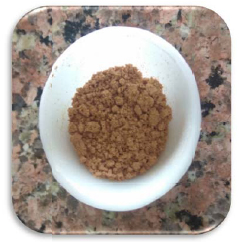
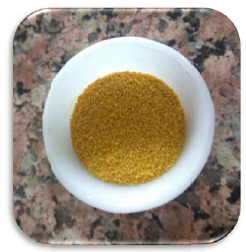
2.2.4. Rose Petals
Rose petals, as shown in Fig. (4), is a great cleanser and helps in removing oil and dirt deposited in clogged pores. Being a gentle antiseptic and astringent, it helps to cleanse the skin and prevent blemishes. Rose petals help minimize redness and smoothens irritation – making it ideal for all skin types due to its calming and healing abilities. This plant is rich in carboxylic acid, myrcene, kaempferol, and quercetin. Flowers also contain tanning matter, fatty oil, and organic acids. Anthocyanin is a naturally occurring pigment in fruits and flowers. Several previous reports have illustrated the beneficial activities of anthocyanin. Anthocyanins are well-known anti-oxidative chemicals among polyphenols. Hence, we assumed that anthocyanins in RPE showed skin anti-inflammatory activity by their anti-oxidative effects. Additionally, three flavonol glycosides of ethanolic extract, including quercetin-3-O-glucoside, kaempferol-3-O-rhamnoside, and kaempferol-3-O-arabinoside have antioxidant activity. However, the potential of this effect is maybe due to the existence of quercetin 3-O-glucoside and other flavonoids in the extract [9]. Both Fresh Flower (FF) and Spent Flower (SF) extracts of R. damascene flowers also showed antioxidant activity [14, 15].
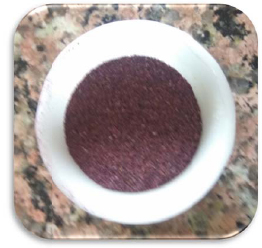
2.2.5. Turmeric
Turmeric, as shown in Fig. (5), has anti-inflammatory and anti-bacterial effects. It reduces redness from blemishes and calms skin conditions like eczema. It is excellent for blemishes due to tan, as it is a natural antiseptic. Turmeric gets its health benefits primarily because of curcumin, a bioactive component with anti-inflammatory and antioxidant principles. Curcumin is a diaryl heptanoid (IUPAC name: (1E,6E)-1,7-Bis(4-hydroxy-3-methoxyphenyl) hepta-1,6-diene-3,5-dione), a tautomer compound existing in enolic form in organic solvents or as a keto form in water. Because of this polyphenol's potential to modulate multiple signaling molecules, it has been reported to possess pleiotropic activities. First shown to have anti-bacterial activity in 1949, curcumin has since been shown to have anti-inflammatory, anti-oxidant, pro-apoptotic, chemopreventive, chemotherapeutic, anti-proliferative, wound healing activities [16-18].
2.2.6. Oats and Oatmeal
Oatmeal, as shown in Fig. (6), contains distinct molecular components with high antioxidant activity, such as tocopherols, tocotrienols, and flavanoids. In addition, it is a unique source of avenanthramides, phenolic amides containing anthranilic acid and hydroxycinnamic acid moieties, and endowed with major beneficial health properties because of their antioxidant, anti-inflammatory, and antiproliferative effects. It carries anti-oxidant properties and helps to repair the damage made to the skin by pollution, UV rays and chemicals. It is an excellent tan remover, and mixing it with lemon juice and lemon peel with rose water, works magic for tanned skin. Owing to its healing, moisturizing and anti-oxidant properties, oatmeal is effective in soothing tanned skin [19-22].
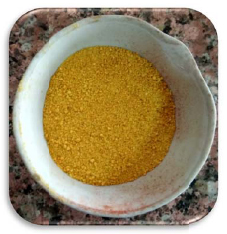
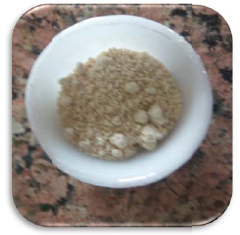
2.2.7. Manjistha
Manjishtha has anti-inflammatory and antioxidant properties. Compounds, such as anthraquinones, bicyclic hexapeptides, quinines, and iridoids in Manjishtha are responsible for many of its beneficial properties, such as removal of tan and improvement in the complexation of skin [23-26].
Uses: Prepared formulation, as shown in Fig. (8), acts as an anti-tan pack, enhances the radiance of the skin, aids in smoothing and soothing the skin.
2.3. Precautions to be taken while Applying this Pack
(1) The face pack should not be left on the face for more than 20–25 min, as keeping it for a very long time may result in the formation of wrinkles, sagging of skin, and enlargement of open pores.
(2) The face pack should be applied once a week. The dried face pack should not be peeled or scratched. This may harm the underlying skin.
(3) The water should be sprayed on the face before removing the dried face pack. After removing the mask, an ice cube on the skin should be rolled. This helps close open pores and tighten skin. It also tones and soothes the skin.
(4) The face should not be scrubbed vigorously. This may result in the eruption of pimples and dark spots. The person who has applied the face pack should stay away from the.
(5) The face pack should not be applied near “eye zone.” The skin around the eye is very delicate. The process of removing the face pack may damage the skin around the eyes.
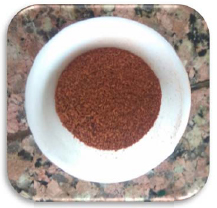
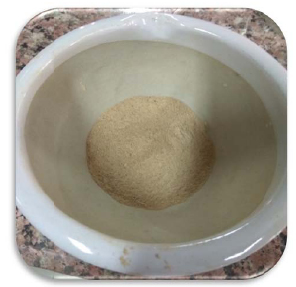
2.4. Evaluation
The prepared formulation was assessed for checking various quality parameters to ensure its stability and viability in the longer run.
2.5. Organoleptic Evaluation
Organoleptic properties, as mentioned in Table 2, are the sensory experiences of the distinctive attributes or qualities of a product. The properties of the product are observed like color, odor, appearance [27-29].
| S.No. | Organoleptic Features | Observation |
|---|---|---|
| 1. | Color | Pale Yellow |
| 2. | Odor | Pleasant |
| 3. | Texture | Fine |
| 4 | Appearance | Powder |
2.6. Physicochemical Evaluation
The evaluation of powder, as mentioned in Table 3, in terms of both physical and chemical properties were observed. In this, certain parameters were calculated like pH, Loss of Drying (LOD), Ash value, etc., [30-32].
| S.No. | Physico-Chemical Test | Observation |
|---|---|---|
| 1. | pH | 6.8 |
| 2. | LOD (Loss of Drying) | 1.4% |
| 3. | Ash Value | 4.2% |
2.7. Phytochemical Evaluation
Phytochemical evaluation, as mentioned in Table 4, is the identification of the medicaments found in plants. Some of the phytoconstituents that can be obtained from plants are alkaloids, flavonoids, carotenoids, tannin, anti-oxidants, and phenolic compounds, such as Amla contains vitamin C, orange peels have a rich amount of antioxidants [33-35].
| S.No. | Phytochemical Evaluation | Observation |
|---|---|---|
| 1. | Molisch’s Test | YES |
| 2. | Mayer’s Test | YES |
| 3. | Hager’s Test | YES |
| 4. | Braymer’s Test | NO |
| 5. | Volatile Test | YES |
2.8. Rheological Evaluation
Rheology is the science of the flow of matter. Powder flow characteristics, as mentioned in Table 5, are commonly identified by various parameters measurements, such as Bulk density, tapped density, Carr’s index, angle of repose, etc.,. All these approaches allow the calculation of indices characterizing powder flowability [36-40].
| S.No. | Rheological Evaluation | Observation |
|---|---|---|
| 1. | Bulk Density | 0.42 |
| 2. | Tapped Evaluation | 0.48 |
| 3. | Angle of Repose | 40.2o |
| 4. | Carr’s Index | 12.5 |
| 5. | Hausner’s Ratio | 1.14 |
2.9. Irritability Test
An irritability test of the pack is observed to check the effect of the pack on the skin. The pack is applied on the surface of the sun exposure area and allowed for a certain time period. Then, effects like irritation, redness, itchiness, rashes, as mentioned in Table 6, are observed. Human skin is very sensitive. Sometimes due to allergy or other reactions, like hypersensitive reactions of skin with chemicals, causes very harmful effects on the skin, which leads to various skin disorders that is why the irritability test is performed [41-43].
| S.No | Parameters | Observation |
|---|---|---|
| 1. | Swelling | - |
| 2. | Irritation | - |
| 3. | Redness | - |
2.10. Stability Test
This test is performed, as mentioned in Table 7, to check the stability of powder under various environmental conditions. In this, the pack is stored at different temperatures (35°C and 40°C), and relative humidity and change in the physical and chemical properties were investigated, such as a change in color, odor, pH, texture, etc., [44-46].
| S.No | Parameters | Observation |
|---|---|---|
| 1. | Change in Color | Nil |
| 2. | Change in Odor | Nil |
| 3. | Change in pH | Nil |
| 4. | Change in Texture | Nil |
| 5. | Change in Smoothness | Nil |
2.11. Spreadability
It was determined by an apparatus that was developed in-house. The apparatus consists of a wooden block with a fixed glass slide, and a movable glass slide with one end tied to a weight pan rolled on the pulley, which was in the horizontal level with a fixed slide. The spreadability of the formulated gel was measured on the basis of the ‘Slip and Drag’ characteristics of the gel. An excess of gel (about 2 g) under study was placed on the ground slide. The gel was then sandwiched between two slides. One kg weight was placed on the top of the two slides for 5 min to expel air and provide a uniform film of the gel between the slides. Excess of the gel was scraped off from the edges. The top plate was then subjected to pull off 50 gm of gel, which was then mixed with the help of string attached to the hook and the time (T, in seconds) required by the top slide to move a distance of 7.5 cm was noted. A shorter interval indicated better spreadability [47-49].
3. RESULTS AND DISCUSSION
3.1. Physical Parameters
The pack was prepared and standardized on various parameters. The free-flowing properties were exhibited by the pack. The prepared formulation was found to be of good quality, and pale yellow in colour, with a pleasant odor, desirable in cosmetic formulations. The pH of formulation was found to be near to the neutral range, i.e., 6.72 pH. The ash content and moisture content were confirmed within limits. Phytochemical screening revealed the presence of glycosides and volatile oils. Rheological parameters were found to be appropriate and suitable for a powdered formulation.
CONCLUSION
The present formulation relies on the use of herbal extracts for cosmetic purposes. The use of cosmetics has been increased for personal care. The bioactive ingredients having medicinal activities in cosmetics influence the biological functions of the skin mildly and provide nutrients required for healthy and glowing skin. The prepared formulations exhibited good flow ability properties. Stability parameters like colour, nature and fragrance of the formulation revealed that there was no noticeable variation during the study tenure. Prepared pack based on herbs was found to be appropriate on all standards and can serve as a better alternative to treat tanning caused due to any reason like sun, pollution, etc.,. This is a user-friendly approach as it can be prepared easily with the help of freshly available herbs.
ETHICS APPROVAL AND CONSENT TO PARTICIPATE
Not applicable.
HUMAN AND ANIMAL RIGHTS
Not applicable.
CONSENT FOR PUBLICATION
Not applicable.
AVAILABILITY OF DATA AND MATERIALS
The data that support the findings of this study are available within the article.
FUNDING
None.
CONFLICT OF INTEREST
The authors declare no conflict of interest, financial or otherwise.
ACKNOWLEDGEMENTS
Declared none.

